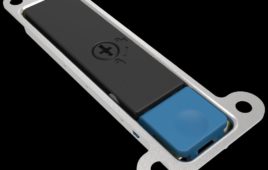Sprint CFO Tarek Robbiati on Wednesday said the carrier is gearing up for yet another lease-back arrangement, this time involving its spectrum assets.
First unveiled in March, Robbiati said the plan to sell some of the carrier’s spectrum to another entity and then lease back those airwaves will likely come to fruition in the coming months.
“Right now we’re in the middle of driving our work around spectrum leaseco,” Robbiati said. “We will update the market in due course, but this is expected to happen probably within the next several months. I don’t want to give a specific date because I do want to drive the lowest cost of capital in a structure of this sort.”
Robbiati said the spectrum leaseback deal, which will likely include portions of Sprint’s 2.5 GHz holdings, will include the minimum amount of usable spectrum possible. Robbiati said the deal will also be arranged in such a way that Sprint will retain ownership of the airwaves in question.
“We would do it in a way that allows us to raise capital without relinquishing the rights on the spectrum, Robbiati said. “It’s really important we do that because the heart of our strategy and the heart of the potential of Sprint is realized when we unleash 160 MHz of 2.5 (GHz) spectrum.”
The spectrum deal will be Sprint’s latest venture into leaseback transactions. The carrier in November executed a $1.2 billion handset leaseback deal with Mobile Leasing Solutions and followed up with a $1.1 billion exchange with the company in April. Sprint last month also secured $2.2 billion in additional funding through a network asset leaseback deal with Network Leaseco.
Sprint parent company SoftBank has been intimately involved in all the leaseback deals.
Robbiati on Wednesday said another network leaseback deal is possible, but said the carrier will base its plans on how much funding it secures in the coming spectrum transaction.
Despite concerns about Sprint’s capital investment figures for 2016, Robbiati reiterated that the carrier is looking toward a 5G future with a plan to deploy thousands of small cells across the country.
Robbiati said the cost of deploying a small cell site is 60 to 70 percent lower than the cost of deploying a tower site.
“You don’t have to spend a lot of money in a 5G world to create a cracking network, especially if you have a huge amount of spectrum,” he said. “So one thing we have to think about as we put all of this amount of money to use is what would be over the long run the return on invested capital of 5G networks. You’ve got to deploy them differently with cheaper cost structures to maintain the return for investors. Doing it the old way is not going to work.”
Filed Under: Telecommunications (spectrums)




